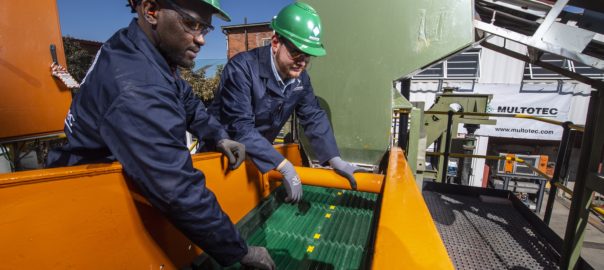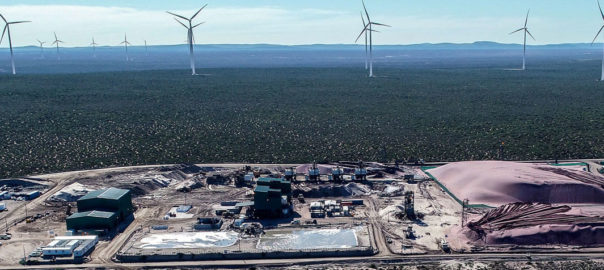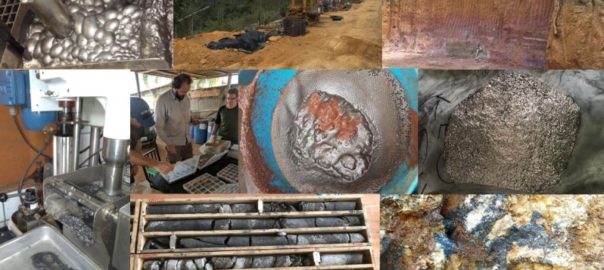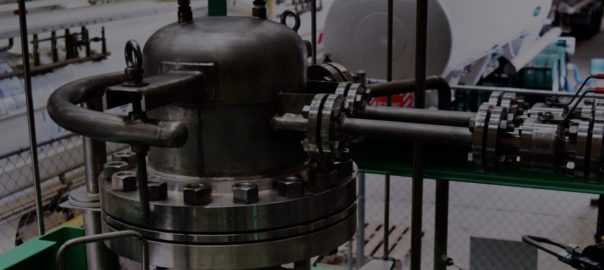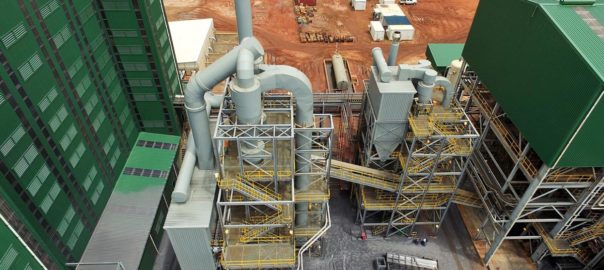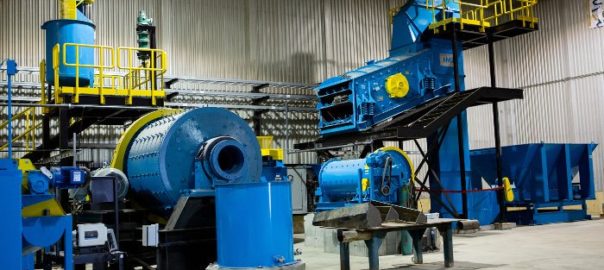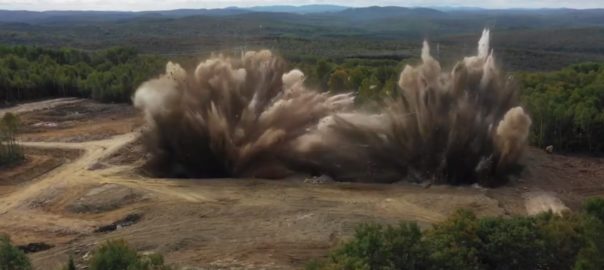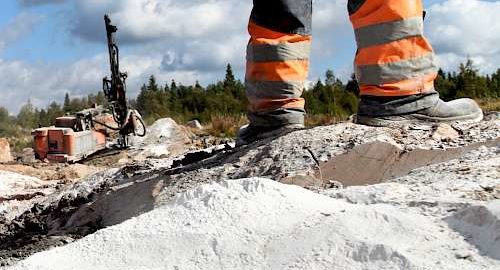Mineral processing specialist, Multotec used a recent media visit to talk up the testing facilities at the heart of its Technology Division.
The South Africa-based company can carry out a range of testwork with its specialised equipment in Spartan, Gauteng, according to Multotec Technology Manager, Faan Bornman.
“Much of our testwork comes from customers who are in the early stages of project development,” Bornman says.
“They need to understand more about how their minerals or material will separate under given conditions. Often there is not a mathematical model that can predict accurately what they can expect.”
Testwork can reduce project risk significantly, providing a solid foundation for the subsequent design and optimisation of process facilities, Multotec says, with Bornman noting that physical testwork is usually the best way of finding out how particles will behave in a process plant.
The equipment available to Multotec customers includes laboratory-scale wet high-intensity magnetic separators, cyclone rigs, filtration equipment, centrifuges, spiral rigs and a screening research rig. There is even capacity to test water purification methods on mine effluent.
“Extensive test work is especially relevant when a customer is wanting to mine and treat less traditional minerals like lithium or graphite,” Bornman says. “As demand grows for commodities like these, we have had customers bring samples to test how our equipment would perform. In these tests, we trial various methodologies and scientifically record and compare the results.”
The R&D laboratory prepares samples and conducts particle size analysis using equipment such as pressure filters, drying ovens, sieves, shakers, sizers and separating funnels. When chemical analysis is required, samples are sent to outside laboratories.
Bornman said his division also receives enquiries from existing customers when they face challenges: “We research the application of different methodologies to customer material, often leading to the development of a new product or improvements to our existing products,” he said.
“In addition to providing a solution for the customer, we are also able to contribute to the efficiency of the industry as a whole, with an updated and commercialised product.”
Screening
When it comes to tests on mineral screening, a test rig – located at Multotec’s Spartan headquarters – delivers two primary benefits, according to Chris Oldewage, Technology Manager at Multotec Manufacturing. First, it facilitates the in-house development process of screening media products. Second, it allows screening media to be tested against customer requirements to ensure the right solution is delivered.
“The ongoing research and development behind our screening media products give the industry opportunities to optimise efficiencies and recoveries,” Oldewage says. “However, changing anything on a plant brings risk of unexpected downtime. Our screening test rig can considerably reduce operational risks by proving any changes before they are implemented on site.”
In the controlled environment provided by the screening test rig, customers can view the actual performance of screening media products with material from their mining operations, Multotec says, with the company’s testing protocols generating the data necessary for detailed process analysis. This facilitates well-informed subsequent decisions, the company said.
The screening rig is made up of three test platforms: a vibrating screen, a sieve bend and a static drain screen platform. The vibrating screen can conduct classification tests, wet and dry dewatering tests, product development tests and plant screen simulations. The static drain screen and sieve bend screening test platforms are wet classification, drainage and dewatering tests.
Multotec Process Engineer, PJ Pieters, said accurate scaling of a customer’s on-mine process is vital for achieving representative and relevant test results.
“We gather a range of key data from customers on our test work questionnaire,” Pieters said. “This includes their material tonnages, volumes of water, screen sizes in operation and aperture sizes on panels among other information.”
This ensures sample sizes are representative and the tests accurately reflect what is taking place in the mine’s processes. Tests, meanwhile, are conducted in triplicate runs to ensure a sound scientific basis for the findings.
Oldewage said: “By removing the risk that mines face in trying new solutions, our testing capability smooths the way for valuable innovation to improve screening performance.”
The screening test facility at Multotec also includes a small Lucotec screen and a small wedgewire trommel screen, both for small-scale verification test work.
Cyclones
Multotec’s large scale cyclone rig, meanwhile, can test the performance of a range of cyclone sizes, up to 450 mm diameter. Tests related to classification, desliming and dewatering, as well as dense medium separation using density tracers, can be conducted.
Among the benefits to customers is the ability to test large volumes of samples, as the rig includes a 1,750 litre sump and a 6/4 pump, Multotec said. Flexibility is provided by a variable speed drive connected to the pump, to vary the flow rates as required by the cyclone size.
Dry samples usually need to be blended before testing, and wet samples may need to be dried before blending. The resulting samples from the test must also be scientifically prepared for particle size and chemical analysis. The precision at each stage is vital, as bulk samples as large as 200 kg may need to be reduced to as little as 100 g.
The rig’s infrastructure also includes two Multotec vezin samplers, which are compliant with the highest design standards to provide reliable samples, according to Multotec. “These help to minimise the common errors of manual sampling and ensure that the integrity of the sample is retained,” the company says.
In addition to using the test rig to analyses the customer’s process flowsheet – with Multotec engineers identifying where its range of classification and other products can add value – the company also uses the cyclone test rig for its own product development.
“This on-going process has resulted in a range of cyclones that are lighter, more cost effective, environmentally-friendly and energy efficient,” the company said. “They all contribute to helping customers lower their cost per tonne in a low footprint, sustainable plant operation.”
Spirals
Multotec says its spiral test rig has been adapted in response to the industry’s need to re-treat chrome dumps and upgrade ultra-fine chrome.
Again, located at the company’s headquarters in Spartan, the rig allows eight to 10 different spirals to be erected at a time.
Jeantelle Rust, R&D Engineer at Multotec Process Equipment, said: “With the drive to process tailings in the chrome sector, we have been running tests on a more compressed spiral with a reduced pitch. This reduces the velocity of the very fine particles.”
This configuration works particularly well when dealing with fine material, hence its application in tailings, Rust said. The spiral could offer a cost-efficient way of separating ultra-fine chrome material and recovering valuable product, according to the company.
Rust said: “Such a solution presents an attractive commercial proposition to industry and will also address environmental concerns presented by tailings dumps.”
Using a “mouth-organ product box”, the material being tested on the spiral rig is split into eight product fractions, not just the usual three for product, middlings and tailings. This helps optimise the mass balance for reporting purposes, according to the company.
The spiral test rig has also been used to evolve designs that deal with coarser material, Multotec said. “Customers were looking for a solution to the ‘beaching’ of coarse coal product on the spiral’s surface, for instance,” it explained.
Rust said: “We were able to modify the angles and diameter of the trough to address this challenge. Our ability to make small adjustments to the equipment, and to test material repeatedly at full scale, is the key to finding practical solutions.”
Multotec has also conducted research for producers of mineral sands where head grades were steadily dropping. This necessitated the treatment of larger tonnages, requiring higher capacity spirals.
“Space constraints on the customer’s site meant that adding spirals to their process was not an option,” Rust said.
“Wider spirals were thus tested for higher throughput, with different angles to minimise losses.”







